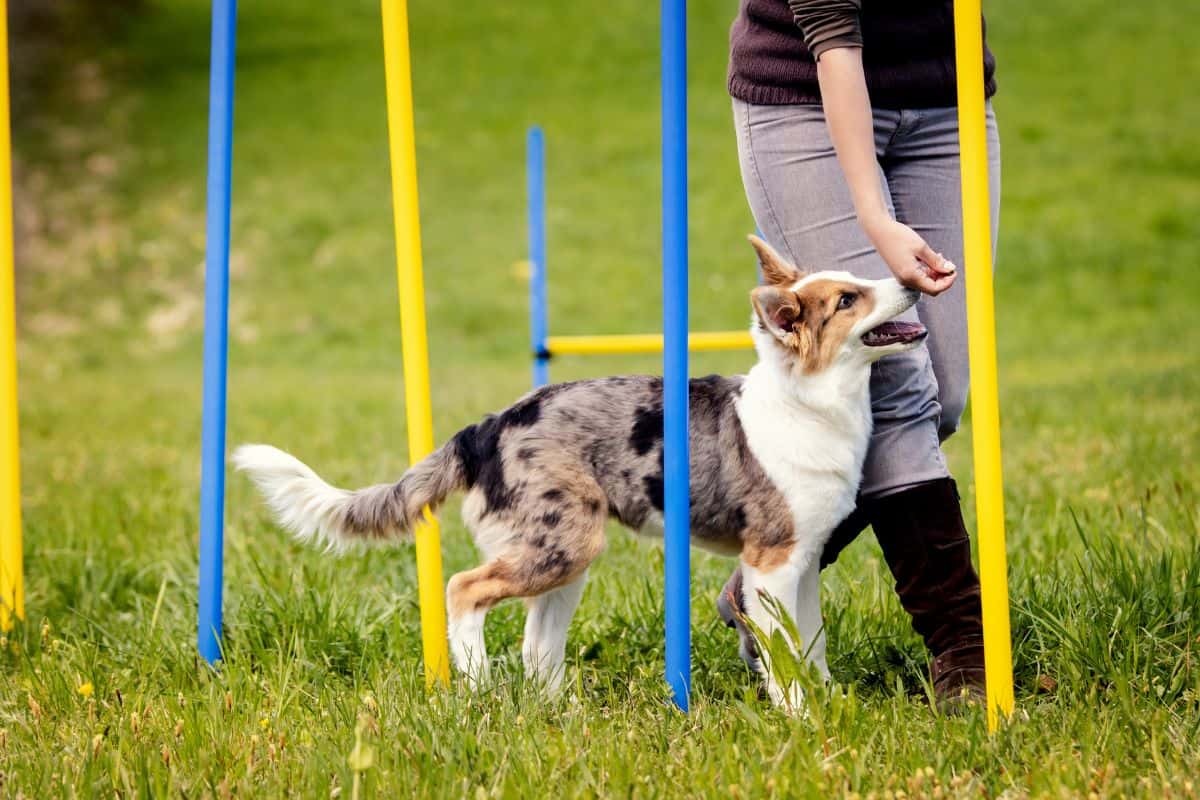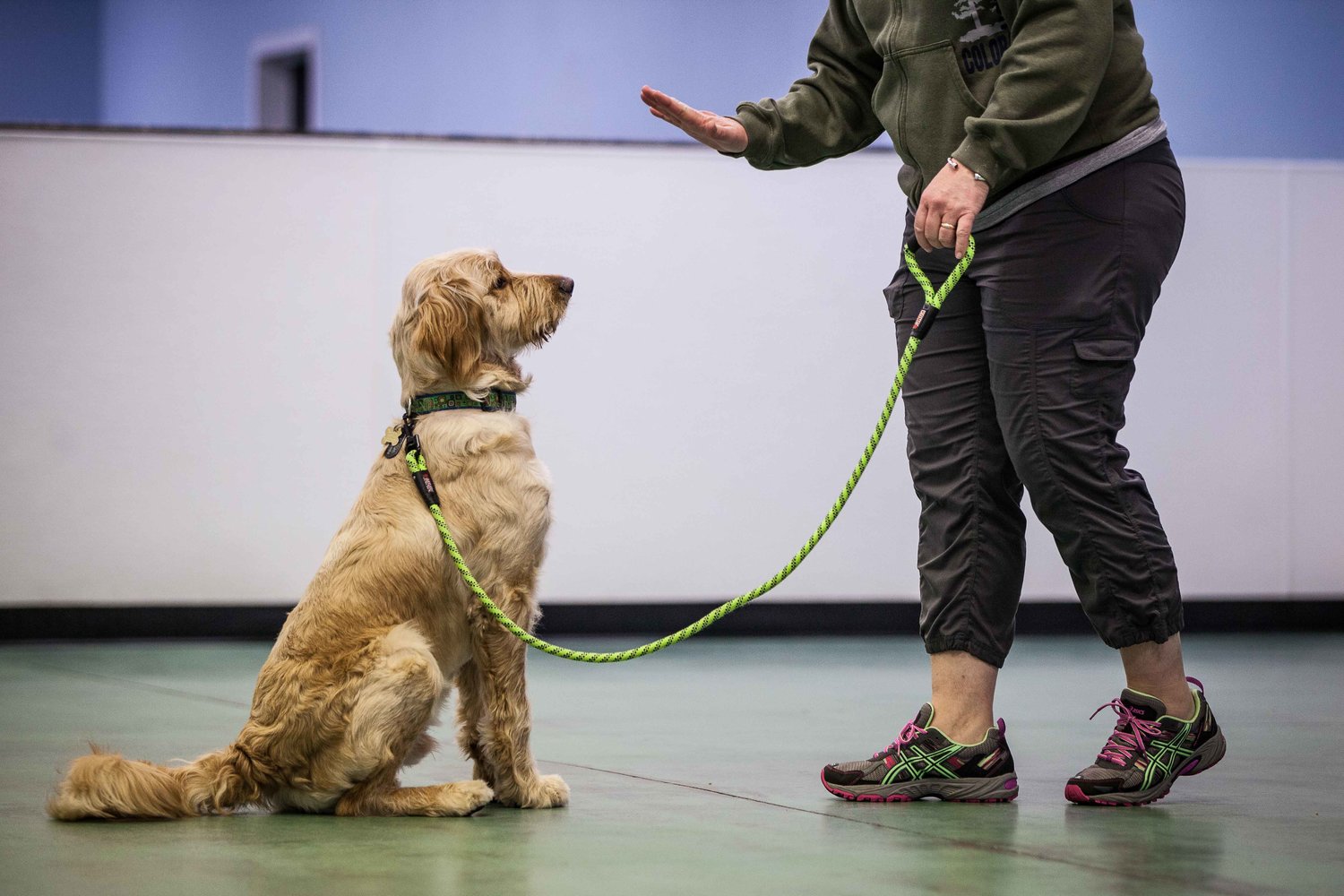Dog Training Solutions to Help You Raise a Well-Behaved Pet
Dog Training Solutions to Help You Raise a Well-Behaved Pet
Blog Article
Top Pet Training Techniques Every Owner Ought To Know

Favorable Reinforcement Strategies
Utilizing positive reinforcement techniques is important for reliable canine training, as it promotes a relying on bond between the fitness instructor and the dog. This method concentrates on rewarding preferable habits instead of penalizing unfavorable ones, creating a setting favorable to learning. Rewards can include treats, appreciation, or play, which encourage dogs to duplicate the habits that make them these benefits.

Furthermore, this strategy enhances the dog's excitement for training sessions. When pet dogs associate training with favorable experiences, they are extra engaged and responsive. Past immediate therapy, positive reinforcement encourages a collaborative partnership between the pet and instructor, minimizing anxiousness and anxiety
To take full advantage of efficiency, it is important to deliver benefits quickly, making certain the dog links the habits with the support. Fundamentally, positive reinforcement techniques not only generate better-trained pets however additionally advertise an unified collaboration between dog and owner.
Remote Control Training Approach
The clicker training technique is an extremely reliable technique that builds on the concepts of favorable reinforcement by including a distinct audio to mark preferred actions. This method makes use of a small portable gadget that creates a clicking noise, allowing instructors to connect with their dogs in a clear and prompt way. When a dog does a habits that the owner desires to urge, the remote control is triggered, adhered to by a reward, typically in the type of deals with or appreciation.
The trick to successful remote control training lies in consistency and timing. It is vital to click at the exact minute the wanted habits happens, ensuring that the pet dog links the noise with the action and the succeeding incentive. This approach not only boosts communication however likewise fosters a more powerful bond between the proprietor and the dog, as it encourages interaction and interaction throughout training sessions.
Remote control training can be used to a variety of commands and actions, from fundamental obedience to a lot more complicated methods. Its versatility and efficiency make it a preferred technique amongst specialist trainers and animal proprietors alike, paving the means for a receptive and well-trained canine buddy.
Leash Training Essentials
Effective leash training is vital for making sure a risk-free and enjoyable strolling experience for both pet dogs and their owners. Dog training. Chain training ought to start early and be come close to with perseverance and consistency. Beginning by picking an ideal chain and collar or harness. A flat collar may help some canines, while others may take advantage of a harness that lowers pulling.
Introduce your pet dog to the chain progressively, permitting them to explore it in a comfy environment. Once they are accustomed, technique loose-leash strolling. This entails gratifying your pet dog for strolling beside you instead of drawing ahead. Use treats and appreciation to strengthen desired behavior, and make sure to stay tranquil article source and assertive.
If your pet begins to draw, quit walking right away. Furthermore, technique different walking atmospheres to assist your pet dog adapt to disturbances.
Routine method will solidify your canine's understanding of chain decorum. Remember that leash training is a continuous procedure; patience and uniformity will produce the very best outcomes, fostering a positive experience for both you and your canine friend.
Socialization Strategies
Socializing is a crucial element of pet dog training that should ideally start during puppyhood yet can be helpful at any age. Reliable socializing assists pet dogs establish self-confidence and minimizes the likelihood of behavioral problems. To carry out successful socialization methods, subject your dog to a variety of environments, people, and other pets.
Beginning with controlled setups, such as puppy classes or arranged playgroups, where young pet dogs can connect securely. Progressively present your canine to brand-new experiences, consisting of different noises, surfaces, and tasks. Guarantee these encounters are positive and gratifying to establish a sense of safety and security.
For adult dogs or those lacking exposure, begin with low-stress scenarios. Short, positive interactions with important link pleasant human beings and tranquil pet dogs can produce favorable associations. Utilize deals with and praise to strengthen preferable actions throughout these experiences.

Uniformity and Perseverance
Identifying the relevance of uniformity and perseverance in dog training is essential for accomplishing long-term results. Educating a pet dog is a gradual procedure that calls for a structured method and unwavering commitment from the owner. Each command or habits must be strengthened continually to aid the dog understand what is expected of them. Irregular training can lead to confusion, making it difficult for the dog to grasp commands or habits, ultimately preventing progression.
Furthermore, perseverance is an essential part of effective training. Pet dogs, like human beings, learn at their very own speed. Some might understand ideas swiftly, while others might take much longer. It is vital for owners to remain tranquil and supportive, reinforcing positive behavior without resorting to frustration or punishment. This fosters a trusting relationship in wikipedia reference between the pet and proprietor, encouraging a more prepared and passionate student.
To grow uniformity and patience, develop a routine training routine, utilize the exact same commands, and ensure that all relative use the same training concepts - Dog training. By doing so, you create a steady setting favorable to learning, permitting your pet to develop and grow into a well-behaved buddy
Final Thought
In final thought, effective canine training strategies, such as positive reinforcement, remote control training, and appropriate chain training, are essential for promoting a healthy and balanced owner-dog relationship. In addition, executing socializing techniques and keeping uniformity and patience throughout the training process adds dramatically to a pet's total well-being. By incorporating these techniques, pet dog proprietors can help with the development of well-adjusted, obedient animals, eventually improving the lifestyle for both the owner and the pet.
Amongst the most noticeable methods are positive reinforcement, clicker training, and leash training, each offering special advantages that contribute to a mannerly pet. As we explore these fundamental approaches, it ends up being obvious that understanding their nuances can significantly impact the training experience and the pet dog's general habits.Using favorable support strategies is important for effective pet training, as it promotes a relying on bond between the canine and the instructor.In final thought, efficient canine training techniques, such as favorable reinforcement, clicker training, and appropriate chain training, are crucial for fostering a healthy and balanced owner-dog partnership. By incorporating these approaches, pet owners can facilitate the growth of well-adjusted, loyal animals, ultimately boosting the top quality of life for both the owner and the pet.
Report this page